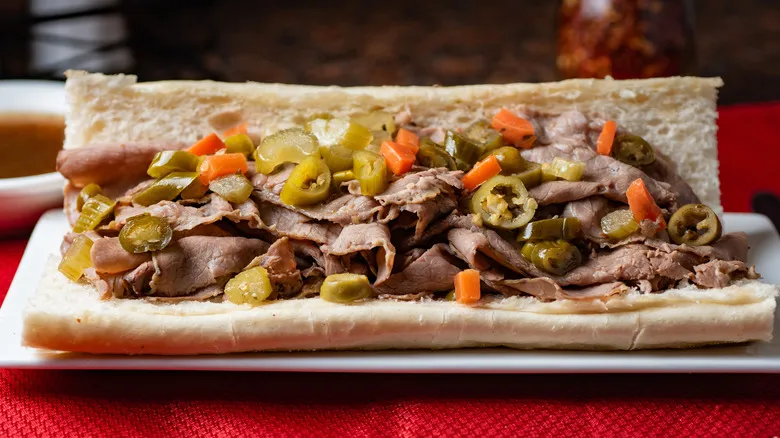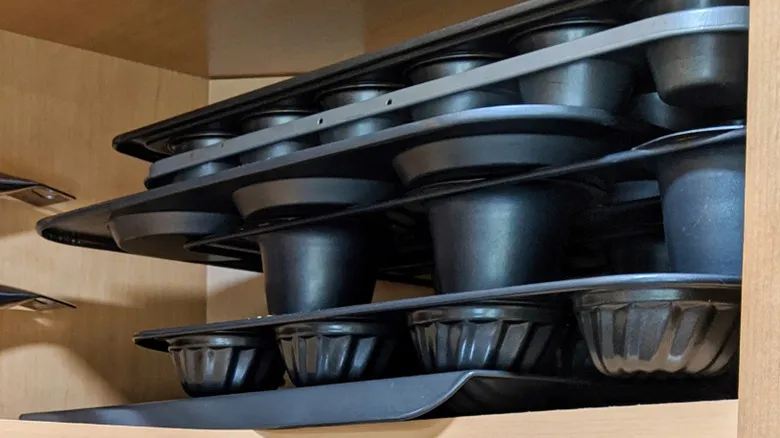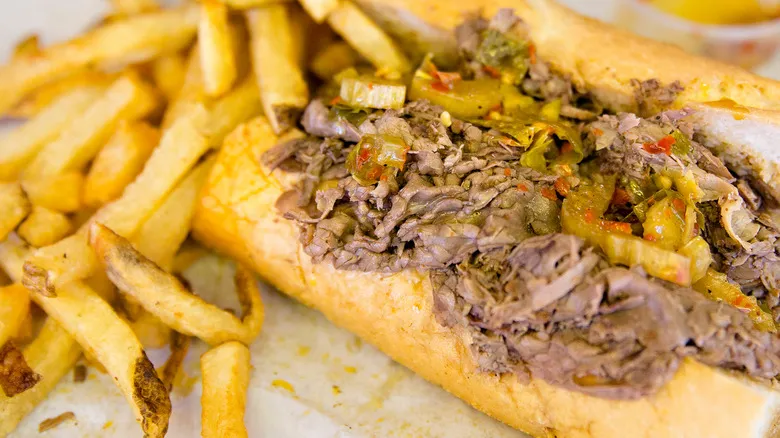Tips for freezing beef to slice

First and foremost, keep in mind that you're not freezing the beef roast for long-term storage. The goal is to firm up the meat for easier slicing. This technique is known as par-freezing, and to do it effectively, it's crucial not to let the meat chill for more than about 30 minutes to prevent it from becoming too hard. If you accidentally leave the beef in the freezer for too long, it will be nearly impossible to cut.
To prevent the meat from drying out, it's advisable to wrap it tightly in plastic wrap before placing it in the freezer. While this step isn't mandatory, it helps retain the juices and keeps the meat moist. While the meat is freezing, you can focus on preparing other dishes or making a homemade giardiniera that can be tailored to your taste, similar to what many of the best Italian beef spots in Chicago offer. Alternatively, you can use a store-bought option like Mezzeta Chicago-style hot giardiniera or try the milder version from Eastern Feast.
Getting the thinnest slices possible

When you're ready to take the beef out of the freezer, unwrap it and place it on a large, sturdy cutting board. With a clean, sharp chef's knife, slice the meat as thinly as possible. The slices don’t have to be perfect, and it’s fine if you end up cutting a half or a third off the exposed edge each time, since you’ll be folding the meat into the sandwich anyway.
If you want to skip the potentially tedious and frustrating task of slicing by hand, consider purchasing pre-sliced roast beef. While it may not be as flavorful as slow-cooked beef in au jus, it can still be delicious. Look for a deli that knows their craft and request the thinnest slices available. If they offer shaved slices, definitely choose that option. For this approach, you’ll need to prepare your own au jus since you won’t have any drippings. You can create it using beef stock, spices, and either Worcestershire sauce or soy sauce. The aim is to enhance the meat with rich, beefy flavors by simmering the deli meat in your stock-based au jus.
Regardless of how you slice it (or not), once you have your beef ready, it’s time to assemble that perfect homemade Italian beef in all its messy glory. You can even take a cue from the professionals and ask your guests if they prefer their Italian beef dry or wet, and whether they like it sweet or spicy.
Recommended

One Genius Storage Technique For Baking Pans Can Open Up Tons Of Kitchen Space

What's The Closest Substitute For Mustard?

How To Tell When Your Crepe Is Ready To Flip

10 Clever Ways To Use Frozen Peanut Butter
Next up

